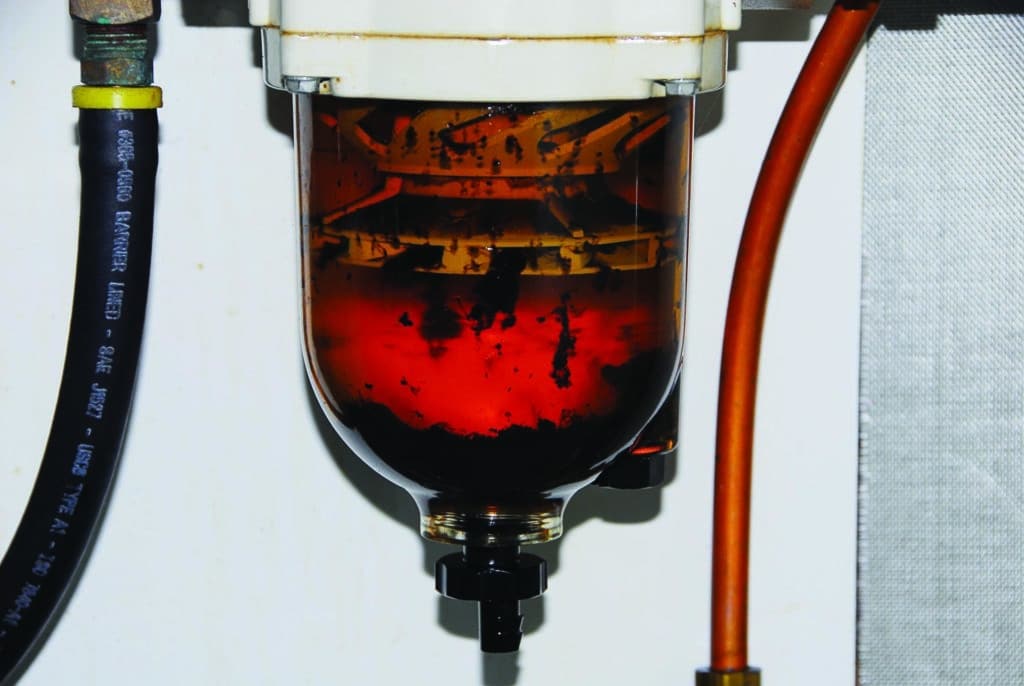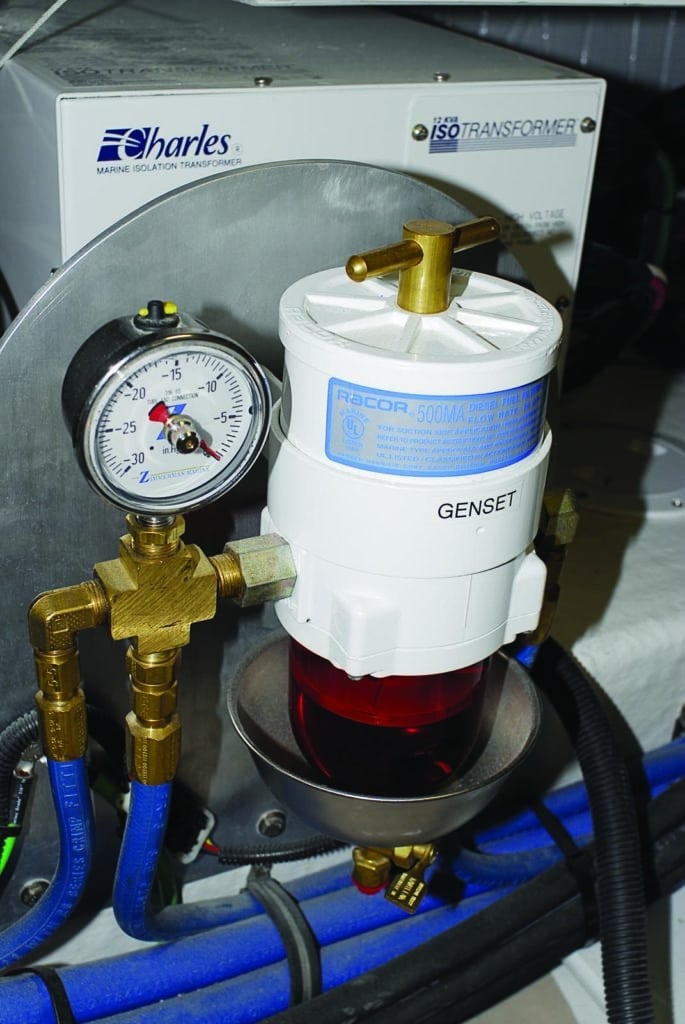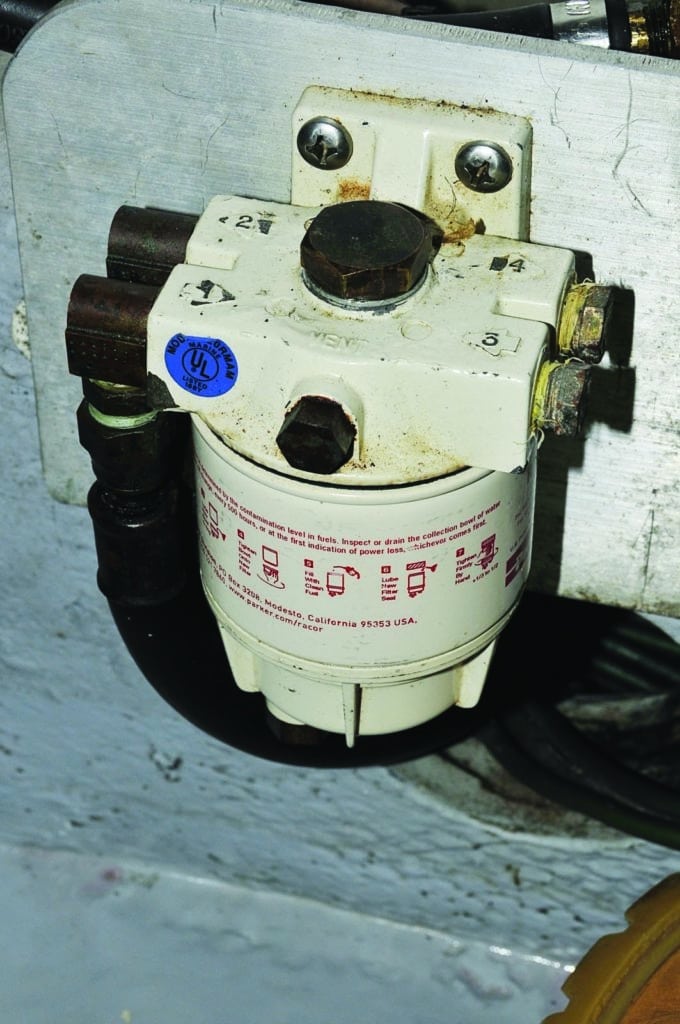Cruise long enough and you’re bound to encounter some type of fuel contamination; it’s a regrettable yet almost inevitable fact of life afloat. Depending on the approach you take to primary fuel filtration, however, it could be a major or minor issue.
While a primary fuel filter technically represents the first opportunity to catch and remove contamination from fuel — after all, there is a secondary filter on the engine — in fact it’s really the only chance. For if water, asphaltene or byproducts of biological contamination get past the primary filter, they often pass through the secondary filter as well. (Because the secondary filter is opaque, it’s impossible to know when contamination has made it that far.) The goal, therefore, is to provide the best primary filtration possible.
So when it comes to filtration, there’s no such thing as overkill (though some boatbuilders accuse me of such when I suggest to buyers the installation of a larger primary filter). But larger filters are clearly capable of capturing and safely containing more water and debris. Equally important, larger filters like the Racor 500MA Turbine series are infinitely easier to inspect and service compared with smaller filters that may, technically, be correctly sized for a given auxiliary engine. Small spin-on or sandwich-type filters are cumbersome to inspect and replace, especially in a seaway. They’re also more prone to air ingestion and retain fewer contaminants, and their replacement elements are often more difficult to obtain.
Among the advantages of 500MA filters (and others like them) are a large, clear bowl; a T handle that makes for easy, tool-free replacement; provisions for a water-in-fuel indicator; full UL Marine compliance for fire resistance; O-ring fittings that are virtually guaranteed to be leak free; ready provisions for installation of a vacuum gauge; and readily available replacement elements in the appropriate primary ratings of 10 and 30 microns.
Far too few primary fuel-filter installations include a vacuum gauge — a small, relatively inexpensive, yet invaluable piece of gear. Without one, there’s no way to measure how much contamination has accumulated within the filter, and therefore no accurate means of knowing when it should be replaced. If a filter element shows no vacuum restriction, there’s no need to replace it. A vacuum gauge also serves as a useful troubleshooting tool.
It’s worth noting that not all primary fuel filters meet UL Marine fire-resistance requirements. To comply with this standard, filters and other fuel-carrying components must be capable of withstanding 2½ minutes of flame exposure without failing or leaking. If your filter has a plastic bowl and no heat shield, chances are very good it’s not compliant — it should be retrofitted with a heat shield or replaced entirely. Look for the UL Marine and/or ABYC stamp of approval.
While many primary filters include provisions for a drain valve, few come with one, so it must be added separately. When doing so, again be sure to select only valves that meet UL Marine and/or ABYC standards. These are characterized by a lack of springs (to retain tension and fuel-tight integrity); rotation that is no more and no less than 90 degrees; and of course flame resistance (which makes plastic valves unacceptable).
Finally, drain valves should be capped or plugged to prevent fuel spills should the valve handle inadvertently be moved.
Steve D’Antonio offers services for boat owners and buyers through Steve D’Antonio Marine Consultants.











